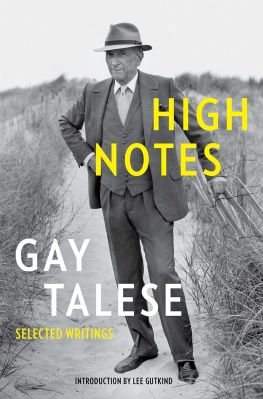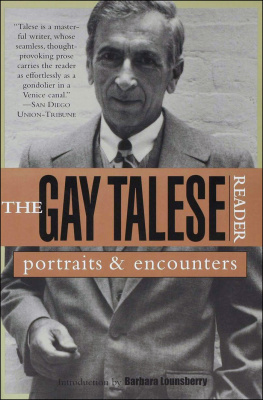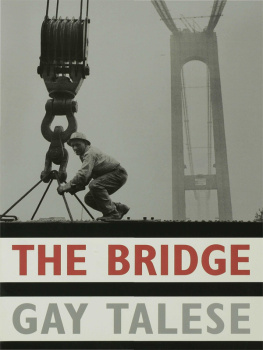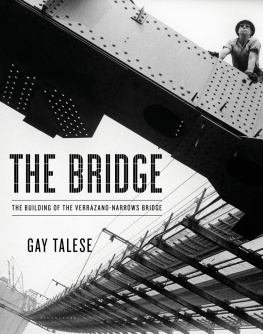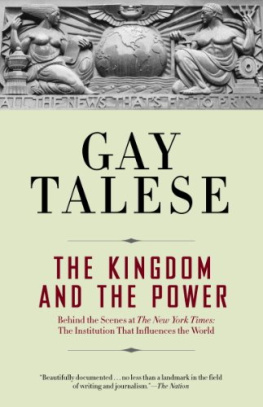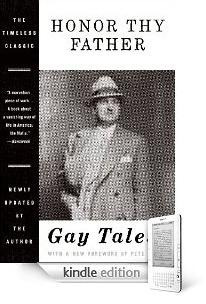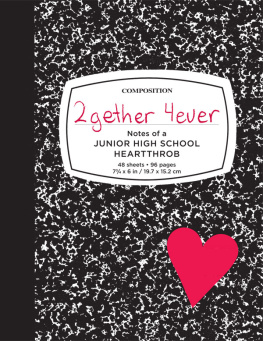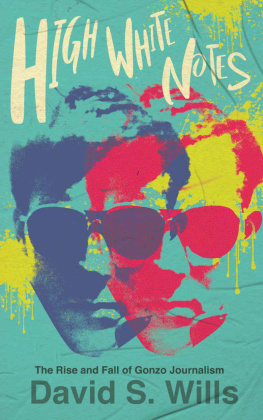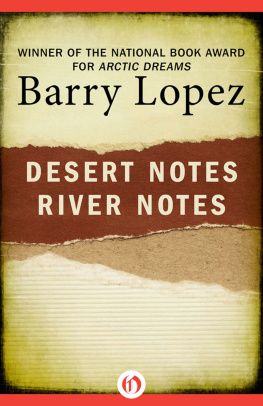Gay Talese - High Notes
Here you can read online Gay Talese - High Notes full text of the book (entire story) in english for free. Download pdf and epub, get meaning, cover and reviews about this ebook. year: 2016, publisher: Bloomsbury Publishing, genre: Non-fiction. Description of the work, (preface) as well as reviews are available. Best literature library LitArk.com created for fans of good reading and offers a wide selection of genres:
Romance novel
Science fiction
Adventure
Detective
Science
History
Home and family
Prose
Art
Politics
Computer
Non-fiction
Religion
Business
Children
Humor
Choose a favorite category and find really read worthwhile books. Enjoy immersion in the world of imagination, feel the emotions of the characters or learn something new for yourself, make an fascinating discovery.
- Book:High Notes
- Author:
- Publisher:Bloomsbury Publishing
- Genre:
- Year:2016
- Rating:3 / 5
- Favourites:Add to favourites
- Your mark:
- 60
- 1
- 2
- 3
- 4
- 5
High Notes: summary, description and annotation
We offer to read an annotation, description, summary or preface (depends on what the author of the book "High Notes" wrote himself). If you haven't found the necessary information about the book — write in the comments, we will try to find it.
High Notes — read online for free the complete book (whole text) full work
Below is the text of the book, divided by pages. System saving the place of the last page read, allows you to conveniently read the book "High Notes" online for free, without having to search again every time where you left off. Put a bookmark, and you can go to the page where you finished reading at any time.
Font size:
Interval:
Bookmark:
For George Gibson, my editor and publisher, with my gratitude and admiration always
BY THE SAME AUTHOR
The Voyeurs Motel (2016)
Frank Sinatra Has a Cold by Phil Stern (2015)
The Silent Season of a Hero (2010)
A Writers Life (2006)
The Gay Talese Reader (2003)
The Bridge (revised and updated, 2003)
The Literature of Reality with Barbara Lounsberry (1996)
Unto the Sons (1992)
Thy Neighbors Wife (1980)
Honor Thy Father (1971)
Fame and Obscurity (1970)
The Kingdom and the Power (1969)
The Overreachers (1965)
The Bridge (1964)
New York: A Serendipiters Journey (1961)

We are in a New York City recording studio, early one Sunday afternoon. Tony Bennett, the legendary and ageless pop singer, is rehearsing a duet of the Rodgers and Hart classic The Lady Is a Tramp with the flamboyant singer-songwriter Lady Gaga. The two performers are having funand flirting shamelessly. Its a great scene:
Bennett is characteristically bronze, smiling and majestic in a Brioni tux with a red pocket square, a white shirt, and a black tie, and Gaga is in a long black lace see-through gown under a sleeveless black leather motorcycle jacket with studded lapels. Shes sipping whiskey and affecting a slight Southern redneck drawl, and shes teasing Bennett about the way his mere presence captivates women. Do they always get really nervous and stand there, sweating and blushing? She herself is clearly not immune.
I will never forget this scene, which appeared in the New Yorker half a dozen years ago. I found it so authentic and affecting, these two legends from different generations coming together, the moment captured by a legend and superstar in his own right, Gay Talese. Since then, whenever I hear either Gaga or Bennett on the radio, I flash back to that studio in New York, and their charming connection.
This is what Gay Talese can do for a reader. Of course, his stories are all diligently reported and elegantly developed throughout, but in every piece there is also this you are here element, a brilliant flash that thoroughly illuminates the characters he profiles.
It happens when I hear a Frank Sinatra songsuddenly I am in a billiard room in a swank private club, as Ol Blue Eyes confronts a stranger wearing a green shaggy-dog Shetland sweater, a tan suede jacket, and Game Warden boots, and says: I dont like the way youre dressed. Or when I see an image of Charles Manson, and I am instantly visualizing the owner of the ranch where the Manson clan took refuge, George Spahn, old and blind, who is transfixed by the killers power over his disciples. These high notes sometimes make you uncomfortable, but they are Taleses own elegant way of capturing the lifeblood of the people he is profiling.
That scene that so perfectly nails Sinatras arrogance is, of course, from Frank Sinatra Has a ColdTaleses seminal work and the one for which he is most acclaimed. And we connect with George Spahn, perplexed by the mysterious Manson, in Charlie Mansons Home on the Range, first published in Esquire in 1971.
These articles, with their high notes, exemplify the enduring legacy of Gay Taleses writing, how he informs his reader, brings to life a distinctive cast of characters, weaves a story through a montage of ideas and anecdotes, and establishes a cinematic impression that is unforgettable.
The longer pieces in this collection represent the best of Taleses journalism for Esquire, a multilayered blend of history, anecdote, and scenes gathered during long stints of boots-on-the-ground contact with his subjects, an intensive approach for which Talese is rightfully celebrated. Talese called it the art of hanging out, and its the foundation of his work. He doesnt parachute into a situation; rather, he lives in it and also, instinctively, on the edges of it, making himself available when he senses opportunity, and scarce when his presence becomes a distraction. In another of his more recent New Yorker profiles, Travels with a Diva, you can see Talese negotiating his involvement with the opera singer Marina Poplavskaya so that he is with her when she wants him and nearly invisible when she doesnt. Theres a defining moment in that story when the diva complains that Taleses attention is making her nervousand he backs off while revealing the contradictions of her personality, and her complicated relationship to fame.
Similarly, Talese sometimes finds himself, without fanfare, at the center of a defining moment. In The Kingdom and the Tower we see Arthur Gelb, veteran managing editor of the New York Times, in a restaurant, commemorating his last day in the old Times headquarters before the move to their current location. Surprisingly, Gelb, leading his guests, reveals a key to a secret entrance to the building. Gelb observes that he has used this secret key a thousand times and the last time he will use it is now. This is how we enter the mayhem of the final celebratory night at 229 West Forty-third Street.
Whether he is part of the storyor nothis presence as the architect of the multidimensional world he recreates, and his mastery of intimate detail, is always apparent. You live inside every character and find a place for yourself in each venue because Talese puts you there. In A Matter of Fantasy, Harold Rubin, who was to become the king of Chicago pornography, leafing through a magazine, first sees the image that would change his life, and we see it as though through his eyes: She wore no jewelry, no flowers in her hair; there were no footprints in the sand, nothing dated the day or spoiled the perfection of this photograph. In The Kingdoms, the Powers, and the Glories of the New York Times the notorious New York Times editor Clifton Daniel remembers the day he met Margaret Truman, the woman who was to become his wife: the way she wore her hair, her shoes, the dark blue Fontana dress with the plunging neckline. And then Talese adds a memorable detail that Daniel had confided to a friend years later, I looked down the neck of that dress, and I havent looked back since.
As in the instance of Daniels friend, Taleses journalistic tendrils extend beyond his subjects to characters at the edges of his stories. This, too, is a mark of his persistence as a reporter. His access to Sinatras milieu, we learn in On Writing Frank Sinatra Has a Cold, was, at first, stonewalled. Sinatra would not see himbecause he had a cold. Faced with a seemingly insurmountable challenge, Talese worked around his subject, connecting with people who knew the best and the worst of the singer. Incredibly, he fashioned his enduring and revealing profile by following but never actually speaking to Sinatra.
On a more personal note, in Wartime Sunday, Talese leads the reader on an engaging journey from his own clumsy attempts to fulfill obligations as an altar boy at Sunday mass in Ocean City, New Jersey, through youthful baseball experiences, and continuing with a riff on the proper technique (according to Taleses father, at least) for eating spaghetti. The personal story concludes with a wonderful high note: A young soldier in a restaurant, at a table not far from Talese and his family, eating spaghettithe wrong way! Oh, and the soldier was Joe DiMaggio.
Extraordinary moments like these emerge throughout this collection, adding color and context to the stories Talese tells. Like the doorman in The Kidnapping of Joe Bonnano, who saw everythingand nothingon the night the gangster was snatched.
Font size:
Interval:
Bookmark:
Similar books «High Notes»
Look at similar books to High Notes. We have selected literature similar in name and meaning in the hope of providing readers with more options to find new, interesting, not yet read works.
Discussion, reviews of the book High Notes and just readers' own opinions. Leave your comments, write what you think about the work, its meaning or the main characters. Specify what exactly you liked and what you didn't like, and why you think so.

